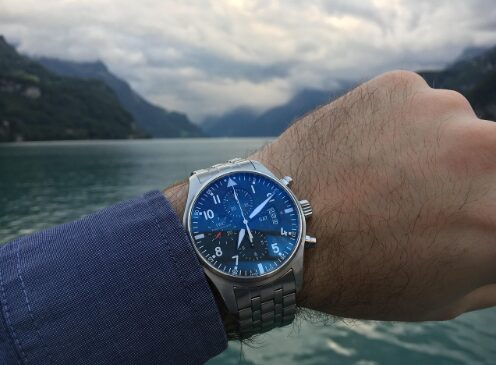When it comes to luxury timepieces, few names command as much respect as IWC. Known for their craftsmanship, precision, and timeless style, an IWC watch represents more than just a way to tell time—it’s a statement of heritage and sophistication. For anyone considering adding an IWC watch to their collection, understanding its history, maintenance needs, and the importance of proper winding is essential. Whether you are drawn to their elegant Portugieser line or their rugged Pilot’s watches, this guide will help you make an informed decision.
The Timeless Appeal of Vintage Watches
Vintage watches, especially from iconic brands like IWC, carry a charm that modern designs often strive to replicate. Each scratch, patina, and engraving tells a story from a different era. Owning a vintage IWC watch connects you to decades of horological artistry and innovation. Whether it’s a rare Ingenieur model or a classic Big Pilot, these timepieces not only enhance your style but also offer a glimpse into watchmaking’s rich history.
However, with the prestige of owning a vintage or luxury IWC watch comes the responsibility of proper care and handling. Understanding the basics of maintenance—particularly the importance of winding—is crucial for preserving its beauty and functionality.
Why Proper Winding is Essential for Vintage Watches
Mechanical watches, particularly vintage ones, rely on regular winding to function correctly. The internal lubricants that keep the movement parts operating smoothly can settle or dry out if the watch is left idle for long periods. Regular winding ensures that the gears stay lubricated and reduces the risk of internal wear.
For an IWC watch, proper winding not only keeps it running accurately but also helps maintain the delicate balance of its intricate movement. Vintage models, which may lack modern shock protection, are even more dependent on consistent and careful winding practices to avoid damage.
Step-by-Step Guide on How to Wind Your IWC Watch Safely
Winding a mechanical watch may seem simple, but doing it incorrectly can cause serious damage. Here’s a step-by-step guide to help you wind your IWC watch safely:
- Take the Watch Off Your Wrist: Always remove your watch before winding to avoid putting pressure on the crown stem.
- Hold the Crown Gently: Using your thumb and forefinger, grasp the crown carefully.
- Wind in a Clockwise Motion: Turn the crown slowly and steadily clockwise. You will usually need around 20 to 40 turns depending on the model.
- Feel for Resistance: As you wind, you will start to feel resistance. Once this happens, stop immediately to avoid overwinding.
- Set the Time Properly: If you need to adjust the time, pull the crown gently into the time-setting position and move the hands forward.
By following these steps, you can ensure your IWC watch remains in top working order without risking unnecessary wear.
Common Mistakes Beginners Make When Winding
Even seasoned collectors sometimes make small errors that can lead to costly repairs. Here are some common mistakes to avoid:
- Overwinding: Forcing the crown past the point of resistance can damage the mainspring.
- Winding While Wearing the Watch: This can create uneven pressure on the crown stem and potentially misalign the internal gears.
- Neglecting Regular Winding: Allowing a mechanical watch to sit unwound for long periods can cause oils to congeal and affect movement.
- Forcing a Sticky Crown: If the crown doesn’t turn smoothly, never force it. Seek professional help from a watchmaker to avoid damaging the movement.
Being aware of these mistakes can save you from expensive repairs and keep your watch running smoothly for years to come.
The Role of Watch Winders in Preserving Vintage Timepieces
For automatic IWC models, a watch winder is a valuable tool. A watch winder keeps your timepiece moving when it’s not being worn, ensuring that the lubricants inside the movement stay evenly distributed. This not only maintains the watch’s accuracy but also extends its overall lifespan.
Investing in an IWC Watch winder can help maintain the integrity of your automatic models, reducing the need for frequent manual winding and ensuring your watches are ready to wear at a moment’s notice. If you are looking for a reliable and high-quality option, the Mozsly watch winder is highly recommended. It offers silent operation, customizable settings, and a gentle rotation that perfectly suits delicate vintage and luxury timepieces.
Recommendations and Tips for Long-Term Care
Owning an IWC watch is a long-term commitment. To keep your timepiece in peak condition, consider the following tips:
- Service Regularly: Have your watch professionally serviced every 3 to 5 years to keep it running smoothly.
- Avoid Water Exposure: Even if your watch is water-resistant, the seals on vintage models may have deteriorated over time.
- Use a Watch Winder: For automatic models, using a trusted brand like the Mozsly watch winder can help maintain accuracy and reduce wear.
- Store Properly: Keep your watch in a dry, temperature-controlled environment to avoid moisture damage.
- Handle with Care: Always handle your watch with clean, dry hands to prevent oils and dirt from transferring to the watch case and bracelet.
By following these guidelines, you can preserve both the beauty and the functionality of your IWC watch for generations.
Conclusion
An IWC watch is more than just a luxury accessory—it’s a piece of history and craftsmanship that deserves proper care. Understanding how to wind it correctly, using tools like an IWC Watch winder, and following good maintenance practices can ensure that your timepiece remains a treasured possession for years to come. By investing in a Mozsly watch winder and taking the time to care for your watch properly, you’re not just protecting your investment—you’re honoring the legacy of fine watchmaking. Start your journey with confidence, and let your IWC watch tell your story for generations.



































